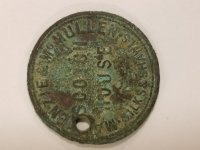berkshiregold
Full Member
I have an 1862 3 cent coin with a hole in it and I've seen numerous posts of coins that have holes punched in them. Was it common to use these as necklaces or charms?
Mich. Wolverine said:The theory that you hear the most is that they put holes in them and then ran a string through the coins so that they wouldn't be lost. I guess if they had them all tied together there was less chance of losing them than having a pocket full of loose change.
Wolverine.

 )
) Why coudn't it have been me?
Why coudn't it have been me? Siegfried Schlagrule said:"....Most of the coins on strings were center holed and they are still made that
way in Africa. Some are found in the old slaves quarters of the south. Many
slaves saved every penny they could get so that they could buy their freedom...."
siegfried schlagrule






I've also heard that in the logging camps up here in Northern Wi. that they use to sew them to the inside of their jackets so they wouldn't lose them & it was harder for someone to steal them from them. Also alot of lumber tokens from up here also have holes in them.

Yep, I first read about that in a metal detecting book in the mid-1970’s...I was 14 with a brand new Whites Coinmaster II.There was one use that I haven't seen mentioned (probably what the flying eagle cent was used for), that was nailing a coin to the center post of a new house for good luck.